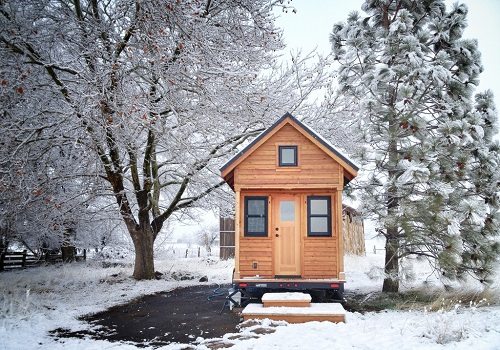
March 27, 2017; San Jose Mercury News
“Density” is the solution to the teaser headline, “How California can hit housing and greenhouse emission goals.” The San Jose Mercury News reports on a new study that links more densely populated neighborhoods with efforts to mitigate the impacts of global climate change.
A statewide turn toward denser, “infill” residential housing near jobs and public transit would allow California to meet its ever-growing housing needs and climate goals for emissions reduction by 2030, a new study says.
The Mercury News story identifies two advantages that flow from residential density.
- Density and public transit complement one another. More “customers” in a smaller space makes transit more efficient and residents in smaller units are more likely to be transit dependent.
- On the affordability side of the equation, more housing units per square foot of land reduce capital costs of construction and maintenance and smaller units can be more energy efficient.
Here’s the catch: People don’t want to live closer together than they do right now. No matter how dense the neighborhood is, property owners associate the word “density” with impersonal glass-and-steel high rises. They think of the kind of building that’s described in the Guardian’s article, “‘Dog kennel’ flats in Barnet will be 40% smaller than Travelodge room.”
Relax, homeowners. The trick is making density fit into an existing neighborhood. A “dog kennel” high-rise among skyscrapers is OK, but next to a single-family home in a residential area, not so much. Planners need to redefine “density” in terms of a cute little “granny flat.”
Homes designed to fit into the aesthetic of the community but with a smaller physical (and energy) footprint could be an answer. Mimi Kirk in NextCity tackles the issue of “accessory housing” in “The Push to Build More ‘Granny Flats.’” Municipalities are already wrestling with regulating micro-homes; houses on wheels are probably a non-starter for most city officials (and neighbors) except where manufactured home parks are already present.
Sign up for our free newsletters
Subscribe to NPQ's newsletters to have our top stories delivered directly to your inbox.
By signing up, you agree to our privacy policy and terms of use, and to receive messages from NPQ and our partners.
The beauty of the micro-home concept is the design flexibility that smaller units can provide. There are styles of micro-homes to fit anywhere. In city centers, modular units could stack above commercial spaces, despite recent setbacks due to logistics and business relationships. Urban residential neighborhood settings can support accessory houses behind or beside single-family detached homes or small footprint “urban infill” houses. Micro-homes in rural areas could be adapted to accommodate the need for personal transportation in areas not ready for public transit but still incorporate energy-saving features like off-the-grid solar, super insulation, and adaptive water reuse.
Last month in the NPQ Newswire, Louis Altman posed the planner’s dilemma in “Ecology and Me-Cology Clash in the Golden State,” wondering if Californians were ready to balance their personal lifestyles with the affordable housing needs of their communities: “Connecting the dots for people who claim allegiance to environmental causes may help open up their hearts and consciences to providing more housing for the less privileged.” The jury is out, and there’s some evidence to suggest that NIMBYist forces have strong appeal in employment-rich communities.
When the choice is between environmental responsibility and accepting residential density, the environment loses most times. As John Maynard Keynes observed, “In the long run, we’re all dead.” So, while academic planners are linking increased urban density and reduced sprawl to the long-term climate benefits, politicians and local planners need to focus on short-term costs and benefits.
On the cost side, there’s pressure on local taxpayers to pay civil servants (teachers, safety forces) a “living wage” for Palo Alto, accept greater government control over private property rights, or both. These tradeoffs are much more immediate to those who would instinctively oppose greater residential density.
On the benefit side, communities can “sell” the notion of attracting new, smaller households. Here’s a way to get your grown children out of the basement and into their own homes, building equity while maintaining proximity.
“The challenge is really adding inventory at the entry-level space,” said Robert Dietz, chief economist of the National Association of Home Builders. “Can builders do that at a cost that meets buyers’ expectations, given rising land development costs, rising wages and rising land costs?” Maybe the answer is smaller, denser infill housing.
The question is not whether greater residential density can meet the twin challenges of affordability and reducing carbon footprints. The question is how. Matching smaller, more efficient housing designs to specific neighborhoods is the answer. And don’t call it “density”; call it “right-sizing” or “boutique housing”…or granny flats.—Spencer Wells













